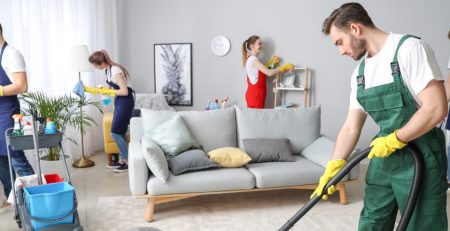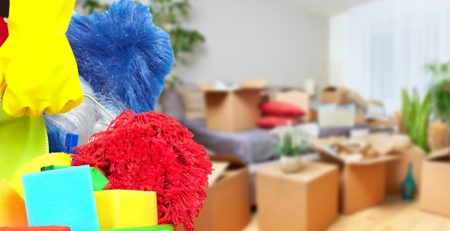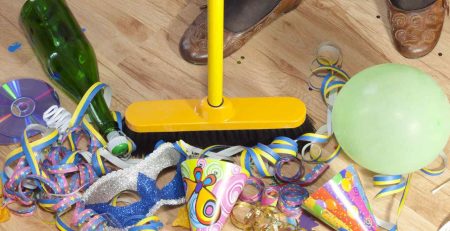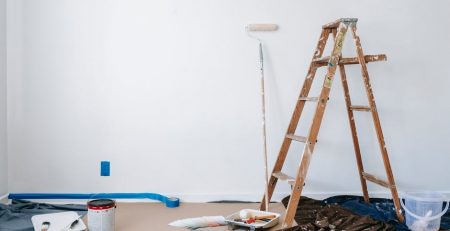Handling Water Damage After a Renovation in Newport Beach
So, you’ve just wrapped up that stunning renovation project in beautiful Newport Beach. Your house is looking better than ever, and you’re probably thrilled with the results. But, here’s the thing – post-renovation, there’s often a hidden threat that can dampen your excitement (pun intended): water damage.
You see, the process of renovating your home can inadvertently expose it to various vulnerabilities. Whether it’s a leaky roof, improperly sealed windows, or plumbing mishaps, water damage is a common post-renovation issue that can sneak up on you. And trust me, it’s no fun dealing with soggy drywall, warped floors, or that musty odor that can creep in when water starts seeping into places it shouldn’t. But don’t worry! In this guide, You have got it maid will walk you through everything you need to know about handling water damage after a renovation in Newport Beach. We’ll cover prevention, early detection, and the steps to take if you find yourself facing this homeowner’s nightmare. So, let’s dive right in and make sure your newly renovated dream home stays dry and cozy.
Handling Water Damage
Renovating your home in Newport Beach can be an exciting project, but it’s not without its challenges. One unexpected challenge that homeowners may face is water damage. Whether it’s due to plumbing issues, leaks, or even weather-related incidents, water damage can be a major setback. In this guide, we’ll provide you with detailed information on how to handle water damage after a renovation in Newport Beach, ensuring that you can address the issue promptly and effectively.
Post-renovation service for water damage in Newport Beach demands swift action. First, pinpoint the source—plumbing, roof, weather, or appliances. Document with photos, dates, and relevant paperwork. Mitigate further damage by turning off water, relocating valuables, and ensuring safety. Contact your insurance company to initiate the claims process. Hire a trusted local restoration company with proper licensing, insurance, and emergency services. Get written estimates and a clear repair timeline. Prevent future damage through regular inspections, maintenance, and holding contractors accountable if they caused the damage. Acting swiftly and efficiently is essential to minimizing the impact of water damage on your newly renovated home.
Benefits of Professional Post-Renovation Cleaning in Newport Beach:
After a renovation, hiring professional cleaners offers numerous advantages. Firstly, experts have the tools and expertise to remove construction debris, dust, and grime effectively. Their thorough cleaning enhances indoor air quality, promoting a healthier living environment. Additionally, professional cleaning ensures the longevity of your renovation investment by preventing damage to surfaces and fixtures. It saves you time and effort, allowing you to enjoy your updated space sooner. Lastly, their attention to detail ensures every nook and cranny is spotless, leaving your home in pristine condition, ready to showcase the beauty of your Newport Beach renovation.
1. Identify the Source of the Water Damage
The first step in addressing water damage is identifying its source. This is crucial for determining whether the damage is related to the renovation work or if it’s a pre-existing issue. Detecting the origin of water damage is crucial for effective mitigation. Begin by checking plumbing fixtures, pipes, and connections for visible leaks or drips. Inspect your roof, especially if recent work was done, for any signs of damage or missing shingles that may be allowing water infiltration. Consider recent weather conditions, such as heavy rainfall or storms, as culprits for leaks near windows, doors, or through damaged seals. Finally, assess appliances that were part of the renovation, as improper connections or defects can lead to water damage. Dust and debris residue, hard-to-reach areas, stubborn stains, odor removal, and managing time constraints are common post-renovation cleaning challenges. Identifying the source accurately is the first step toward addressing and resolving water damage issues effectively. Here are some common sources of water damage after a renovation:
a. Plumbing Problems
Check for any visible leaks or water stains around plumbing fixtures, pipes, or connections. If you find any, they may be the source of the damage. Plumbing problems can include leaks, clogs, low water pressure, and faulty fixtures, causing inconvenience and potential water damage if not addressed promptly.
b. Roof Leaks
If your renovation involved work on the roof, inspect it for any signs of leaks or damage to the roofing material. Roof leaks occur due to damaged shingles, flashing issues, or worn-out roofing materials, leading to water infiltration and potential interior damage. Regular maintenance is crucial.
c. Weather-Related Damage
Sometimes, heavy rain or storms can lead to water intrusion during a renovation. Look for signs of water damage near windows, doors, or other vulnerable areas. Weather-related damage, like heavy rain or storms, can cause water intrusion through vulnerable areas, including windows and doors, resulting in potential water damage.
d. Appliance Malfunctions
If new appliances were installed during the renovation, they could be the source of water damage if they are not properly connected or have defects. Appliance malfunctions can disrupt your daily life. These issues can range from small inconveniences like a noisy dishwasher to major problems like a refrigerator not cooling.
2. Document the Damage
Before taking any action, document the water damage thoroughly. This documentation will be essential for insurance claims and any potential legal disputes. Once you’ve identified water damage in your home, thorough documentation is crucial for insurance claims and repair processes. Use your smartphone or camera to take clear photos and videos of the affected areas. Ensure that you capture both close-up shots and wider angles to provide context. Note the date and time when you discovered the damage, as this timestamp can be vital for tracking its progression. Gather any relevant documents such as renovation contracts, invoices, and communication records with contractors. Proper documentation strengthens your case and ensures a smoother resolution when dealing with insurance providers or restoration professionals. Here’s what to do:
a. Take Photos and Videos
Use your smartphone or camera to capture clear images and videos of the affected areas. Be sure to include close-ups and wide shots to provide context. Taking photos and videos is crucial when documenting damage, aiding in insurance claims, and providing visual evidence for assessing and addressing issues effectively.
b. Note the Date and Time
Record the date and time when you first noticed the water damage. This timestamp can be valuable for tracking the progression of the issue. Recording the date and time when you first notice a problem or damage is essential for creating a chronological record and tracking issues accurately.
c. Gather Relevant Documents
Collect any renovation contracts, invoices, and communication records with contractors. These documents may be necessary when dealing with insurance claims. Collecting relevant documents such as contracts, invoices, and communication records is vital for substantiating claims, ensuring accountability, and facilitating the resolution of issues.
3. Mitigate Further Damage
: Once water damage is discovered, immediate action is essential to prevent escalation. Start by shutting off the water supply if the source is a plumbing issue. Safeguard valuables by moving them to a dry area to avoid additional harm. Exercise caution around electrical hazards, turning off electricity in affected areas if necessary. Block off the damaged section to prevent access, reducing the risk of accidents. Swiftly addressing these steps will minimize the extent of the damage, protect your property, and potentially lower repair costs, ensuring a safer and more efficient restoration process. Once you’ve documented the damage, take immediate steps to prevent it from worsening:
a. Shut Off the Water Supply
If the source of the damage is a plumbing issue, turn off the water supply to that area or the entire house if needed. In case of a plumbing issue or water damage, turning off the water supply is critical to prevent further damage and water wastage, safeguarding your property.
b. Move Valuables to a Dry Area
Remove any valuable items or furniture from the affected area to prevent further damage. Place them in a dry, safe location. To protect valuable items from water damage, relocate them to a dry and secure area, reducing the risk of irreparable harm during plumbing emergencies or leaks.
c. Ensure Safety
Be cautious of electrical hazards. If the water damage is near electrical outlets or appliances, turn off the electricity in that area. Prioritize safety by addressing electrical hazards, turning off power in affected areas, and preventing accidents during water damage incidents, enhancing overall protection for occupants and property.
4. Contact Your Insurance Company
If you have homeowner’s insurance, contact your insurance company as soon as possible to report the water damage. Provide them with the documentation you collected earlier. They will guide you through the claims process and may send an adjuster to assess the damage. In the event of water damage, reaching out to your insurance company promptly is critical. Start by locating your insurance policy and contacting your insurer’s claims department. Provide them with detailed information about the water damage, including its source, date of discovery, and extent. Be prepared to share the documentation you collected, such as photos, videos, and relevant paperwork. Your insurance company will guide you through the claims process, assigning an adjuster to assess the damage and determine coverage. Timely communication with your insurer is essential to initiate the necessary steps for addressing and resolving the water damage issue.
5. Hire a Professional Restoration Company
In many cases, it’s best to hire a professional restoration company to handle the cleanup and repairs. They have the expertise, equipment, and experience to ensure that the damage is properly addressed. When facing water damage, enlisting the services of a reputable restoration company is paramount. Look for a local company with a solid reputation and experience in water damage restoration. Verify their licensing, insurance, and certification to ensure they meet industry standards. Choose a company that offers 24/7 emergency services, as water damage demands immediate attention. Request detailed written estimates for cleanup and repair costs, along with a clear timeline for the work. A professional restoration team possesses the expertise and equipment necessary to restore your property efficiently and safely, helping you navigate the challenges of water damage successfully.
6. Prevent Future Water Damage
After addressing water damage, taking proactive measures is crucial to avoid recurrence. Regular inspections of plumbing, roofing, and vulnerable areas can help detect issues early. Adhere to a maintenance schedule, including cleaning gutters, sealing windows, and checking for leaks. Ensure contractors are held accountable if their work contributed to the damage. Invest in quality materials and proper installation during renovations. Install water detection devices and alarms to provide early warnings. Educate family members on water conservation and the importance of timely reporting leaks. By implementing these preventive strategies, you can safeguard your property in Newport Beach against future water damage and costly repairs. Once the water damage is addressed, take steps to prevent it from happening again in the future:
a. Regular Inspections
Schedule regular inspections of your plumbing, roof, and other vulnerable areas to catch issues early.
b. Proper Maintenance
Follow a maintenance schedule for your home, including cleaning gutters, sealing windows, and checking for leaks.
c. Contractor Accountability
If the water damage was caused by renovation work, discuss the issue with your contractor and ensure that they take responsibility for any necessary repairs.
Handling water damage after a renovation in Newport Beach can be stressful, but with the right approach, you can minimize the damage and restore your home to its former glory. By promptly identifying the source, documenting the damage, and enlisting professional help, you can navigate this challenge effectively and safeguard your investment.
FAQS
1. What should I do if I discover water damage after a renovation?
- Identify the source, document the damage, and contact your insurance company.
2. How can I prevent water damage during future renovations?
- Use qualified contractors, protect vulnerable areas, and conduct regular inspections.
3. Do I need professional post-renovation cleaning in Newport Beach?
- Yes, it ensures a thorough, efficient, and safe cleanup, preserving your investment.
4. What’s the benefit of hiring a restoration company for water damage?
- Experts have the skills and equipment to handle cleanup and repairs effectively.
5. What’s the first step when dealing with water damage?
- Mitigate further damage by shutting off water, moving valuables, and ensuring safety.
Conclusion
In conclusion, addressing water damage following a renovation in Newport Beach requires a systematic approach. Identifying the source of the damage and documenting it meticulously are essential initial steps. Promptly contacting your insurance company and hiring a reputable restoration company can mitigate further harm and expedite the recovery process. Preventing future water damage involves regular inspections, bathroom sanitization, maintenance, and accountability when working with contractors. By taking these measures, you not only safeguard your investment but also ensure a safer and healthier living environment. Handling water damage efficiently is crucial for preserving the beauty and functionality of your renovated Newport Beach home.












Leave a Reply